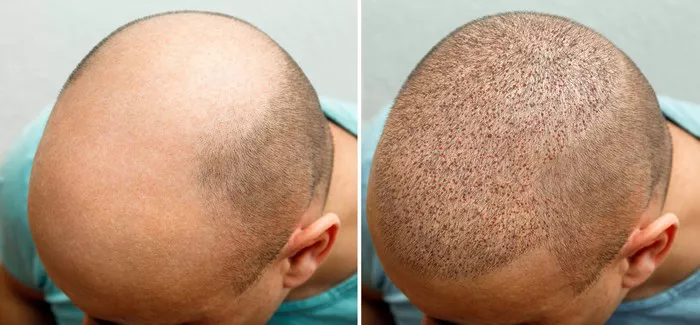Undergoing a hair transplant is a significant step towards regaining confidence and achieving a fuller head of hair. However, the post-operative care is crucial for ensuring the success of the procedure. One important aspect of this care is using a neck pillow. Proper use of a neck pillow can aid in the healing process and prevent complications. In this article, we will discuss six important precautions for using a neck pillow after hair transplantation.
Understanding the Importance of Post-Operative Care
The success of a hair transplant procedure greatly depends on how well you follow post-operative care instructions. The newly transplanted hair follicles are delicate and require a nurturing environment to establish and grow. Any undue pressure or movement can damage these follicles, leading to poor results or even the loss of grafts.
Role of Neck Pillow in Post-Operative Care
A neck pillow helps to keep your head elevated and stable while you sleep or rest. This elevation reduces swelling, minimizes the risk of damaging the grafts, and ensures proper blood circulation to the scalp. Therefore, understanding how to use a neck pillow correctly is essential.
1. Choosing the Right Neck Pillow
Selecting an appropriate neck pillow is the first step in ensuring effective post-operative care. There are various types of neck pillows available, and not all are suitable for use after a hair transplant.
Material Matters
Choose a neck pillow made of hypoallergenic and breathable material. This will prevent any allergic reactions or excessive sweating, which can irritate the scalp. Memory foam pillows are often recommended due to their ability to conform to the shape of your neck and provide consistent support.
Shape and Support
A U-shaped neck pillow is ideal as it supports your head and neck while keeping your head elevated. Ensure that the pillow is firm enough to maintain its shape but soft enough to be comfortable.
See Also: 7 Reasons Why You Should Not Drink Alcohol After A Hair Transplant
2. Proper Positioning of the Neck Pillow
How you position your neck pillow can significantly impact the effectiveness of your post-operative care.
Elevate Your Head
Position the neck pillow in such a way that your head is elevated at an angle of 30 to 45 degrees. This elevation helps reduce swelling by preventing fluid accumulation around the transplant area.
Maintain Stability
The pillow should cradle your neck and head firmly to prevent any unnecessary movement during sleep. This stability is crucial for protecting the newly transplanted grafts from being dislodged or damaged.
3. Sleeping Position
Your sleeping position plays a vital role in the healing process after a hair transplant.
Sleep on Your Back
It is highly recommended to sleep on your back with your head elevated using the neck pillow. This position minimizes the risk of friction or pressure on the transplanted area.
Avoid Side Sleeping
Sleeping on your side can cause direct pressure on the grafts, leading to displacement or damage. If you are naturally a side sleeper, using additional pillows to support your body can help you maintain the back-sleeping position.
4. Duration of Neck Pillow Use
Knowing how long to use the neck pillow is essential for proper recovery.
Initial Recovery Phase
During the first week after the transplant, it is crucial to use the neck pillow consistently while sleeping or resting. This period is critical for the grafts to settle and start healing.
Gradual Reduction
After the first week, you can gradually reduce the use of the neck pillow. However, continue to use it if you experience swelling or discomfort. Consult your surgeon for specific advice tailored to your recovery progress.
5. Hygiene and Maintenance of the Neck Pillow
Keeping the neck pillow clean is important to prevent infections and ensure a healthy recovery environment.
Regular Cleaning
Wash the pillowcase regularly to maintain hygiene. If the neck pillow itself is washable, follow the manufacturer’s instructions for cleaning. A clean pillow helps prevent bacterial buildup that could potentially infect the transplant area.
Avoid Contaminants
Keep the neck pillow away from contaminants such as dust, pet hair, or any substances that could cause irritation or infection. Store it in a clean, dry place when not in use.
6. Monitoring and Adjusting Usage
It is important to continuously monitor your recovery and adjust the use of the neck pillow accordingly.
Listen to Your Body
Pay attention to any signs of discomfort, swelling, or pain. If you experience any of these symptoms, continue to use the neck pillow and consult your surgeon if the symptoms persist.
Follow Surgeon’s Advice
Your surgeon will provide specific instructions based on your individual case. Adhere to their recommendations regarding the use of the neck pillow and other post-operative care measures.
Conclusion
Using a neck pillow correctly after a hair transplant is crucial for ensuring optimal healing and the success of the procedure. By choosing the right pillow, positioning it properly, maintaining a suitable sleeping position, using it for the recommended duration, keeping it clean, and monitoring your recovery, you can significantly improve your post-operative care routine. Always follow your surgeon’s advice and consult them if you have any concerns or experience any complications during your recovery process. With proper care and attention, you can achieve the best possible results from your hair transplant procedure.
Related topics:

